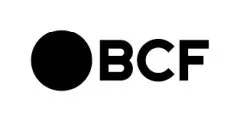It is not a rare occurrence for two companies to work together to develop or market one or more products and services within a partnership that showcases both company marks. In this way, each mark benefits from the other's reputation and visibility. This is known as co-branding.
Co-branding may be used by two companies that offer products in the same line, such as Crocs and Balenciaga, which have collaborated on footwear, or Gucci and Adidas, which jointly offer a range of clothing, bags, and shoes. It may also be used by companies offering distinct products but targeting the same customer base, as in the case of automaker BMW and fashion house Louis Vuitton, which have teamed up to create suitcases designed for cars. Companies that provide services may also join forces with complementary companies, such as distributors or subcontractors. A good example of co-branding in the services sector is the Apple Pay application marketed by Apple and Mastercard. Another common example of co-branding is sponsorship of an event or initiative by a company, which provides financial, material or expert support in return for visibility.
Co-branding may involve one mark being dominant and the other subsidiary, or both marks being on an equal footing. Whatever the choice, it is vital to ensure that each mark remains distinct in the eyes of the public and that the link between the companies and their respective roles be clear, so as to prevent consumer confusion as to the source of the product or service, even if the marks appear together on the products or in ads for the services. If consumers were to begi identifying the mark tomultiplesources rather than a single one, the mark would be considered diluted and to have lost its value.
As an example, if your company sponsors a cultural or sporting event to raise funds for an organization, it is the organization's mark and logo that should appear on the event's promotional material. References to your company's mark and logo in promoting the event should always make it clear that its role is either as a "sponsor" or "partner" so as to avoid public confusion regarding the source of the event.
For instances where your mark is dominant, it is important to ensure that the tone and style of the material reflect your trademark image, and not that of the partner company. This may include any of the following:
- A particular text font;
- Distinctive graphic features; or
- The use of corporate colours.
In addition to a partnership or sponsorship agreement that specifies each company's role in the co-branding initiative, it is vital to establish clear rules for the use of each other's marks so as to safeguard your trademark rights. A guide specifying the rules governing the use of the marks, providing for different scenarios and setting out instructions tailored to each scenario, with supporting examples and counter-examples, is the best tool for a successful co-branding.
Originally published Oct 6, 2023.
The content of this article is intended to provide a general guide to the subject matter. Specialist advice should be sought about your specific circumstances.


